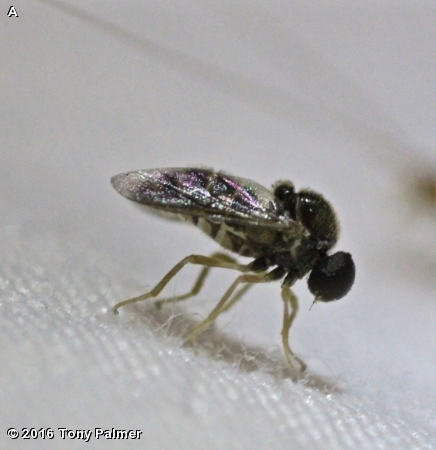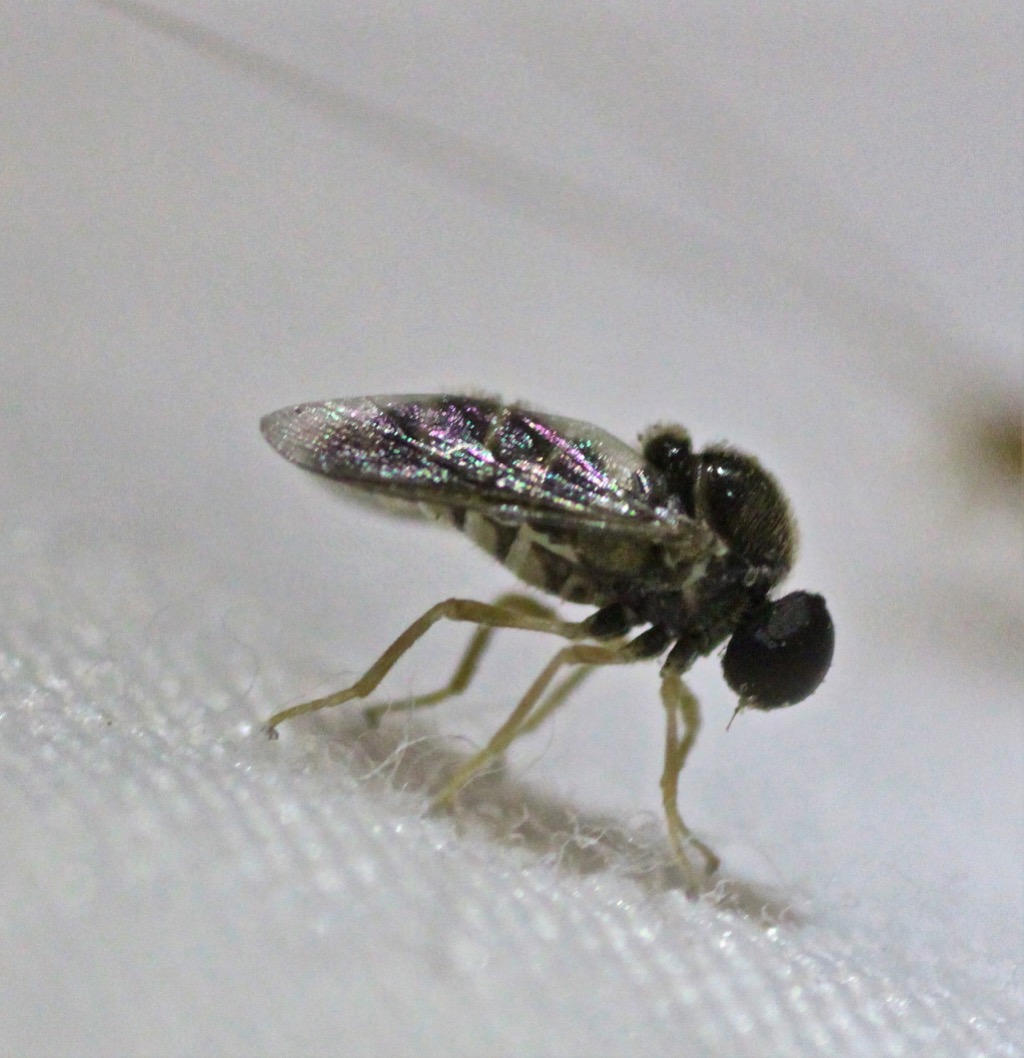
A small fly, about 1/4 inch long (6-8 mm), with a small head in proportion to the size of the fly. It has a swollen thorax that gives it a “hump-backed” appearance. Legs are cream-colored and abdomen is black and white banded. Wings are clear.
This fly is probably common in this area but is rarely seen because of its small size. Small-headed flies, in general, are found worldwide and in the U.S. are more diverse in the southwest. They are most common in semi-arid tropical locations. The individual shown here was photographed when it came to lights set up to attract moths at Neale Woods in June 2016.
Small-headed flies are also called spider flies because they are parasitoids of spiders. Females can lay up to 5,000 eggs soon after mating. Eggs are laid randomly in areas where spiders may be present. The eggs hatch in 3 to 6 weeks producing small, flat larvae. A larva attaches to a passing spider, crawls up its leg and enters the body and begins to feed internally. Adults live only a short time, depending on species, from 3 days to about a month. There are about 60 species of small-headed flies in 7 genera in North America.
Disclaimer: The content of NatureSearch is provided by dedicated volunteer Naturalists of Fontenelle Forest who strive to provide the most accurate information available. Contributors of the images retain their copyrights. The point of contact for this page is: Loren Padelford.

